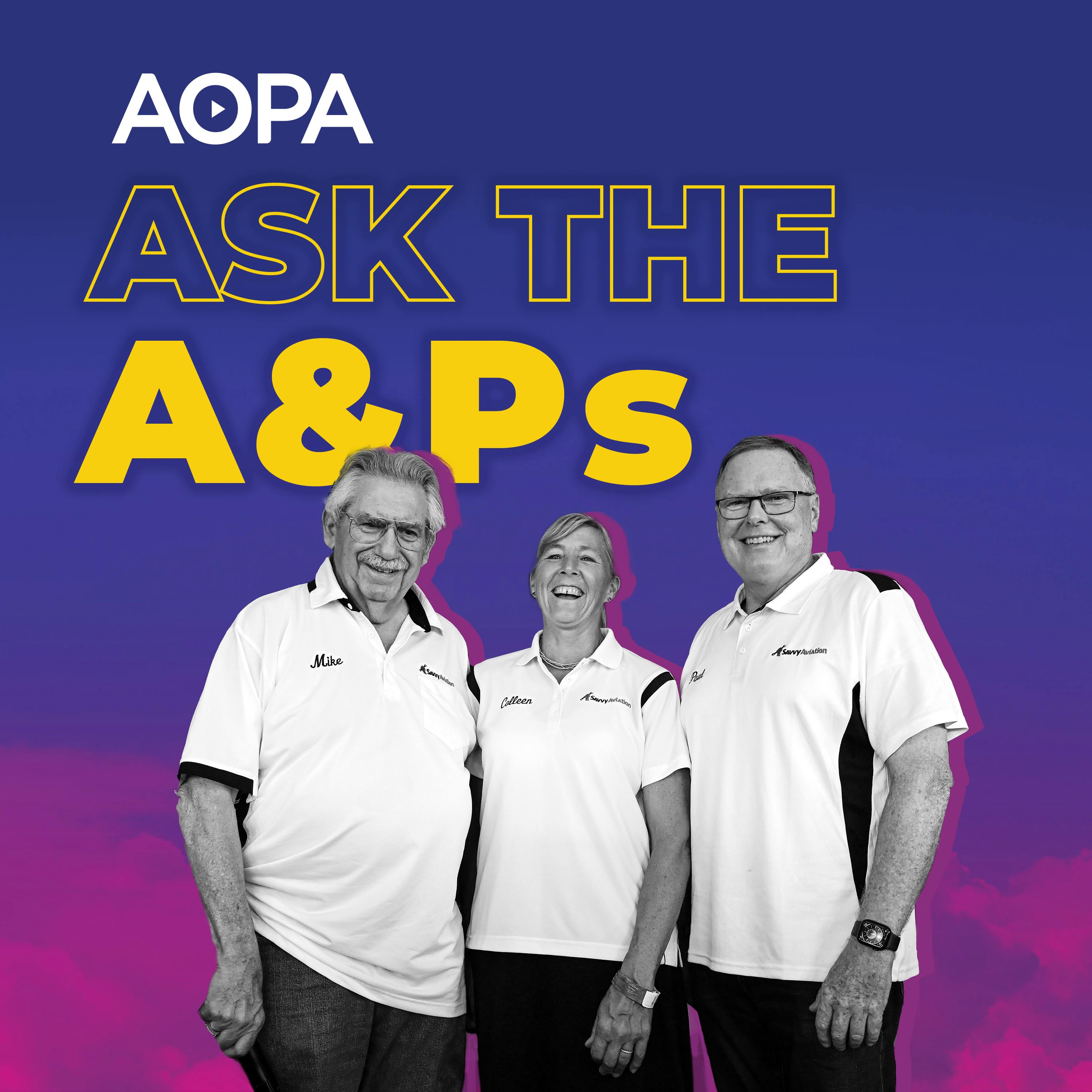Pop that cowling off and squirt away
Description
A grab bag of unique questions come at Mike, Paul, and Colleen this month, including whether to buy new or overhaul, how prop stops work, what happens when you reduce from wide open throttle, and avoiding tiedowns. Submit your question to [email protected] for a chance to be on the show.
Full notes below:
Dale has a Seneca and he’s looking to the future and having to overhaul two engines. He’s wondering how to decide between factory new, reman, or overhaul. Not surprisingly, they suggest flying your current engines as long as possible if they are treating you well. When the time comes that you have to change engines, Mike said his general rule is that if the engine has treated you well to consider a field overhaul. If there’s a concern about the current engine, he said to consider a factory engine. More control over the process is another reason to do a field overhaul.
Jim has a question about his L-3 with a Continental A65. He has an updated carburetor with a mixture control. A challenge with that engine is that you don’t get an onset of roughness when leaning. It just tries to quit, and without an electrical system, an in-flight shutdown isn’t ideal. He’s worried that a big stumble is startling and he pushes it too far rich again, putting him in the red box. Mike said there’s no need to go to roughness. You can lean only to the first indication of power reduction.
Dubs has noticed that after leveling in cruise, when pulling the throttle back from wide open, it moves a significant amount before the manifold pressure changes. Yet in doing so he’s reducing his fuel flow. He’s wondering why this happens. Mike thinks it’s possible Dubs has a carb with an enrichment circuit, which gives more fuel at wide open throttle, meaning fuel flow will come down as soon as throttle is reduced. The hosts discuss how Dubs’ operating practice is how Cessna 182 pilots with 0-470 engines should operate to improve mixture distribution. The impact butterfly valves make is very non-linear, they say. The first 5 to 10 degrees of tilt won’t make a big difference, for example.
Phillip is a maintenance tech in a shop that adjusted the low pitch stop of a prop based on the recommendations of the prop shop. He’s wondering why it was successful. Paul describes how a prop adjustment works, and why some airplanes don’t make full rpm until they’re down the runway a bit.
Richard’s Rotax ran rough on a run-up, and after some troubleshooting he still hasn’t found the culprit. All winter it ran fine, but he’s concerned it will happen again in warm weather. Since this happened on both magnetos it’s likely not a spark plug. Colleen is wondering if the rpm range had an impact because the Bing carbs have three distinct operating ranges. If it happens again Colleen recommends isolating it and first checking the spark plugs, then maybe cleaning the carbs, and finally looking at the fuel delivery lines. Mike thinks it has to be a fuel system problem since it changes with temperature.
Brennan has a nice Mooney M20J that he wants to continue to take good care of. He now lives in a very humid environment and can’t find a hangar. He left the airplane in his old hangar and can barely get to the airplane to fly it. He’s wondering what would be the least damaging practice—fly less or keep it outside. The hosts think it’s better to get the airplane closer and fly it while doing his best to keep corrosion away with freshwater washes, corrosion treatments, and maybe covers.
More Episodes
Published 11/15/24
Lean of peak is causing odd vibrations in a Commander, and the hosts discuss proper troubleshooting. Plus carb heat on the ground, dehydrators, and parts no longer manufactured. Email [email protected] for a chance to get on the show.
Full notes below.
Chip said his mechanic is concerned about...
Published 11/01/24
Rough idle, electronic ignition basics, airplanes to avoid (or not), and the difference between detonation and pre-ignition are on tap for this episode. Email us at [email protected] for a chance to get on the show.
Join the world's largest aviation community at aopa.org/join
Full notes...
Published 10/15/24


